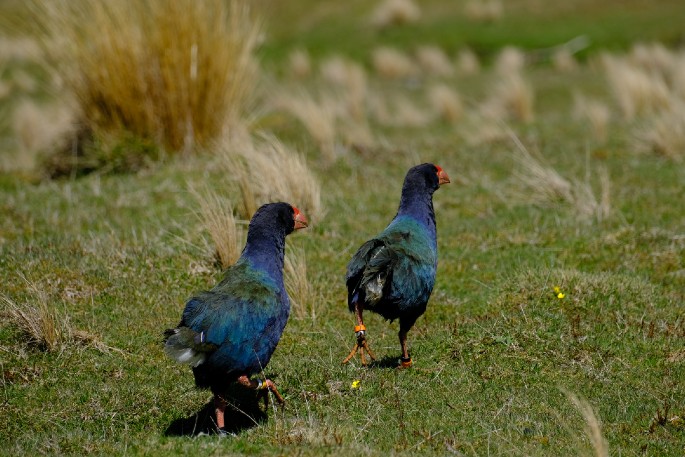This Content Is Only For Subscribers
DOC has intensified trapping at a wild takahē site in the Greenstone Valley near Queenstown after four recent takahē deaths pointed to stoat predation.
Ngāi Tahu and DOC first released takahē on Ngāi Tahu tribal property Greenstone Station in 2023 to establish a new wild population.
The predation is not unexpected says DOC Takahē recovery operations manager Deidre Vercoe, but this apparent cluster of deaths over a five-week period is being taken very seriously as it shows even one stoat can do a lot of damage.
“DNA analysis and necropsy results point to a stoat, and we have since spotted a likely culprit multiple times on a camera in the area.
“A fifth takahē with an unknown cause of death could also have been a victim.
“Stoats can be extremely trap shy and take some time to catch, so more takahē deaths could become a reality.”
Takahē monitoring has been increased, extra traps have been installed, a stoat detection dog is on site, baited trail cameras are in use and the existing trapping network is being rebaited more often.
“Until New Zealand is predator free, any new wild site for takahē will have a level of predation threat. This is the reality our native birds face daily on the mainland,” says Deidre.
“Current predator control tools make a big difference to species survival, but this scenario highlights the challenges.
“Thankfully, the overall takahē population is increasing, so, with the support of our Treaty partner, we can continue to take bold steps to learn more about new wild sites that could support takahē to thrive.”
A population of 20-30 takahē has been living in the Greenstone for more than 18 months now and the health and productivity of the birds has exceeded expectations, with two active breeding seasons indicating the Greenstone Valley is a promising wild site.
The total number of takahē nationwide is more than 500 and more homes are needed for the growing population. More than half live at wild sites where stoats are present.
Ngāi Tahu representative on the Takahē Recovery Group, Gail Thompson says these recent deaths highlight that, despite their large size, sturdy beaks and claws, takahē remain vulnerable to introduced predators wherever they are in the wild.
“This reinforces the importance of continuing to find new wild habitats for our taonga species while also collectively striving for a predator-free Aotearoa New Zealand,” says Gail.
Ngāi Tahu and Takahē Recovery, supported by National Partner Fulton Hogan, remain committed to maintaining a population of takahē in the Greenstone and wider Whakatipu.
Efforts to establish a population of up to 80 takahē this year in the nearby Rees Valley began in February, with a second release due in the Rees in April and a third planned for Spring.



